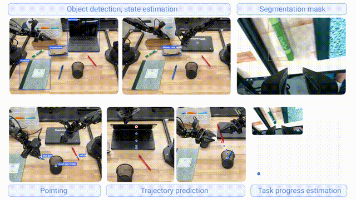【自然语言处理】sklearn的TF-IDF:TfidfVectorizer
关于tf和idf的定义这里就不再赘述了,网上关于二者的讲解博客非常多,这里只讲一下在TfidfVectorizer中是如何计算的,此处计算与平常的公式略有不同。先举个栗子:from sklearn.feature_extraction.text import TfidfVectorizercorpus = ['This is the first document.','This document
·
关于tf和idf的定义这里就不再赘述了,网上关于二者的讲解博客非常多,这里只讲一下在TfidfVectorizer中是如何计算的,此处计算与平常的公式略有不同。
先举个栗子:
from sklearn.feature_extraction.text import TfidfVectorizer
corpus = [
'This is the first document.',
'This document is the second document.',
'And this is the third one.',
'Is this the first document?',
]
vectorizer = TfidfVectorizer(norm=None)
x = vectorizer.fit_transform(corpus)
print(vectorizer.get_feature_names())
print(x.toarray())
def __init__(self, input='content', encoding='utf-8',
decode_error='strict', strip_accents=None, lowercase=True,
preprocessor=None, tokenizer=None, analyzer='word',
stop_words=None, token_pattern=r"(?u)\b\w\w+\b",
ngram_range=(1, 1), max_df=1.0, min_df=1,
max_features=None, vocabulary=None, binary=False,
dtype=np.float64, norm='l2', use_idf=True, smooth_idf=True,
sublinear_tf=False):
TfidfVectorizer中常用的参数有norm='l2', use_idf=True, smooth_idf=True, sublinear_tf=False,这四个参数的取值都是默认情况,取值不同计算过程也不同。smooth_idf=False:
官网写的是log,一开始不知道是ln,看了好多人写的博客都没提到,通过反复将程序运算结果和公式对比才发现是ln。smooth_idf=True:
而且最终算的tf-idf是某个词在其文档中出现的频数乘以idf的值,而不是频率乘以idf,这里要注意。norm='l2':L2范数标准化处理。拿上面的栗子来说,上面程序得到的tf-idf如下所示:
['and', 'document', 'first', 'is', 'one', 'second', 'the', 'third', 'this']
[[0. 1.22314355 1.51082562 1. 0. 0.
1. 0. 1. ]
[0. 2.4462871 0. 1. 0. 1.91629073
1. 0. 1. ]
[1.91629073 0. 0. 1. 1.91629073 0.
1. 1.91629073 1. ]
[0. 1.22314355 1.51082562 1. 0. 0.
1. 0. 1. ]]
我们拿第一行的数来说,经过L2范数标准化处理的过程如下:
最终得到的结果为:
[0. 0.46979139 0.58028582 0.38408524 0. 0.
0.38408524 0. 0.38408524]
更多推荐
 已为社区贡献12条内容
已为社区贡献12条内容








所有评论(0)